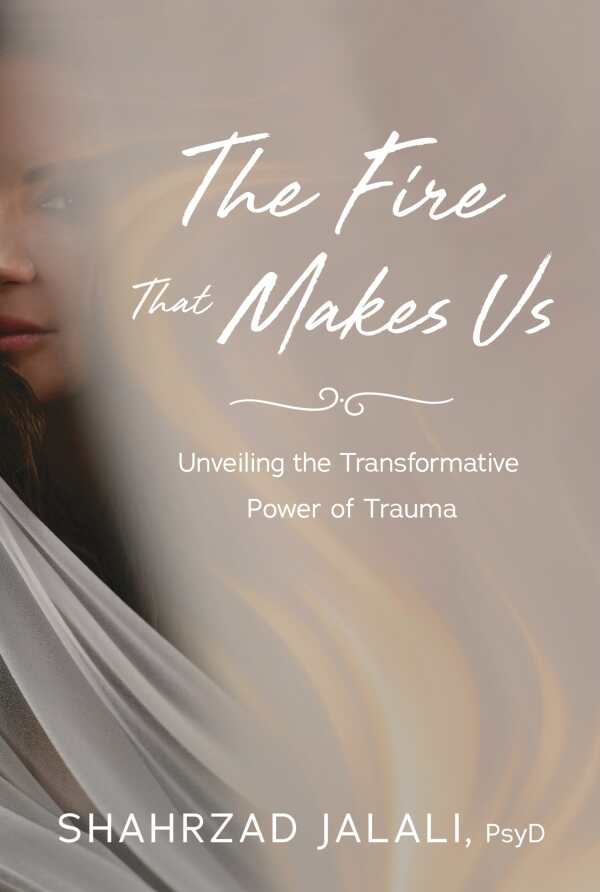The Fire That Makes Us
Unveiling the Transformative Power of Trauma
A traumatized psychologist’s story is used to illuminate and humanize general therapeutic guidance in the soothing allegorical novel The Fire That Makes Us.
In Shahrzad Jalali’s Jungian allegorical novel The Fire That Makes Us, a psychologist’s own emotional and psychological issues are made to correlate to applied methods of therapy.
Charlotte, a composite character whose story draws from Jalali’s various patient interactions (as a psychologist specializing in trauma-related disorders, Jalali helps patients work through their unresolved anguish, repression, and disconnection), is a therapist practicing in Los Angeles. Her life is charted both during and after her office hours. At work, she prepares for an upcoming session; she is prone to encouraging reflective examination of the unconscious mind and redirecting negative thought patterns and behaviors. Personally, she wonders “what life might be like if she could resist overanalyzing every feeling and sensation.” After work, she tries to relax in her apartment complex’s communal hot tub; feeling stressed out after interacting with her patients, she hopes she won’t have to make small talk with other tenants.
Charlotte, it is revealed, also once survived a car crash that killed her father, requiring her to endure reconstructive plastic surgery. Thus, even as she assists patients, she struggles with personal grief, inner conflict, and uncertainty. She is also entangled in a troubled relationship with her charming but narcissistic boyfriend, Adam.
Each segment of Charlotte’s story is followed by a psychological assessment. Indeed, her character serves an expository narrative function, used to humanize therapeutic guidance. For example, the significance of one’s core values versus one’s externally driven “junk values” is explored, with the book asserting that core beliefs transcend the “confines of success and failure” to provide “a more fulfilling and resilient framework for navigating life.” Other concepts include working through repressed emotions, reframing painful memories, and contrasting one’s false versus true selves. All are detailed in a comprehensive manner, with supplemental therapy methods including journaling, engaging in physical activity, practicing mindfulness, and interacting with nature suggested.
Some of the book’s language—in particular, that related to Charlotte’s interactions and breakthroughs—is florid, as with the revelation that the “price was paid in the currency of pain; but she accepted this with grace, recognizing that the symphony of her existence includes both the harmonious chords of joy and the poignant notes of suffering.” The book is at its most persuasive when it keeps matters simple, as when Charlotte observes a passing rainstorm from the “quiet sanctuary of her car,” realizing that “much like nature, every moment holds something new for us.” Both determined and doubtful, incisive and expressive, Charlotte is a heroine whose story resonates beyond the psychological case studies it is used to illuminate.
The Fire That Makes Us is an illustrative novel that doubles as a self-help resource for those dealing with trauma and seeking sustained, integrated change.
Reviewed by
Meg Nola
Disclosure: This article is not an endorsement, but a review. The publisher of this book provided free copies of the book and paid a small fee to have their book reviewed by a professional reviewer. Foreword Reviews and Clarion Reviews make no guarantee that the publisher will receive a positive review. Foreword Magazine, Inc. is disclosing this in accordance with the Federal Trade Commission’s 16 CFR, Part 255.

